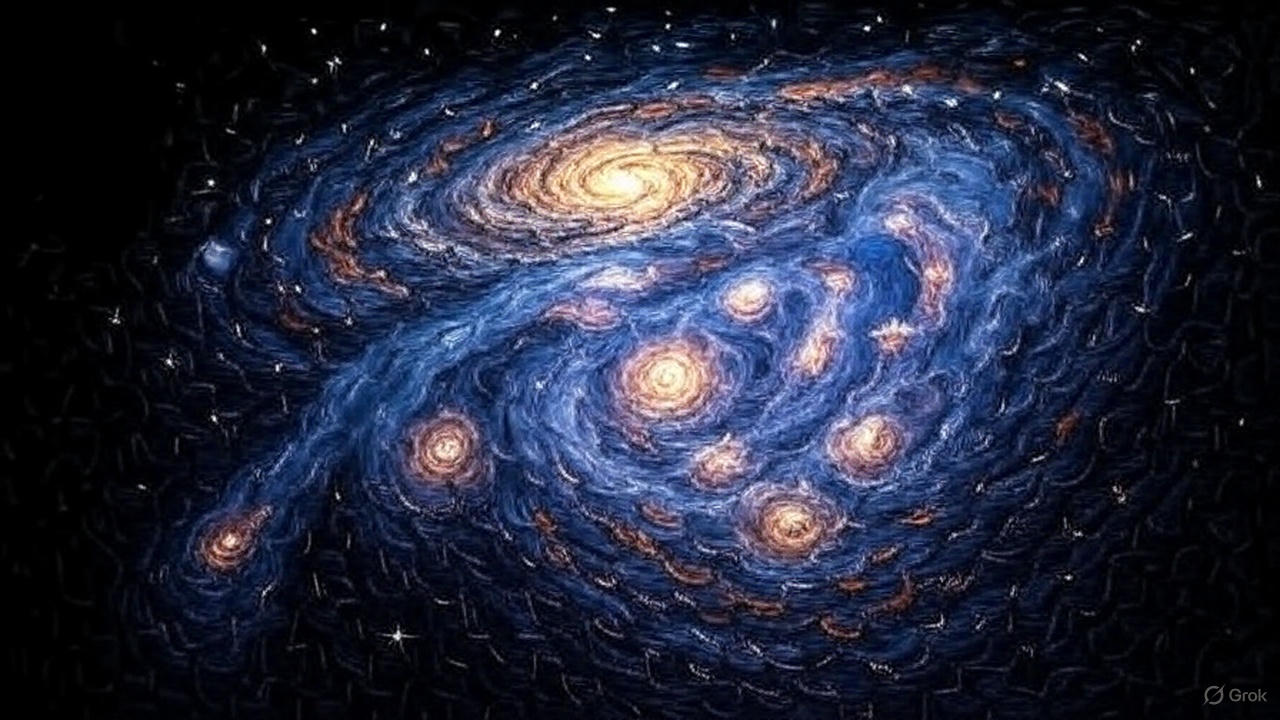JWST Discovers the Cosmic Vine: 20 Galaxies from the Early Universe
Introduction
The James Webb Space Telescope (JWST) has once again amazed astronomers and space enthusiasts alike. On October 3, 2025, the account Night Sky Today (@NightSkyToday) revealed a groundbreaking observation: a chain of 20 galaxies stretching 13 million light-years across, named the Cosmic Vine. This discovery provides a rare glimpse into the universe just 3 billion years after the Big Bang, challenging existing models of early galaxy formation and clustering.
BREAKING🚨: The James Webb Space Telescope spotted a chain of 20 galaxies, dubbed the Cosmic Vine, which stretches 13 million light-years across and dates back to just 3 billion years after the Big Bang, challenging models of early galaxy clustering. pic.twitter.com/dnwTsAX5Oc
— Night Sky Today (@NightSkyToday) October 3, 2025
What Is the Cosmic Vine?
The Cosmic Vine is a massive, serpentine chain of galaxies observed in the Extended Groth Strip, a well-studied sky region between Ursa Major and Boötes. Unlike smaller early-universe structures, this Vine is exceptionally long and complex:
- Length: ~13 million light-years
- Width: ~650,000 light-years
- Galaxy Count: 20 connected galaxies
- Age: Light emitted ~11–12 billion years ago
The observation image captures the Vine in stunning hues, though some critics note artistic enhancements rather than raw observational imagery.
Why This Discovery Matters
- Challenges Cosmology Models: Most models predicted smaller, less-connected galaxy groups at this early stage of the universe. The Cosmic Vine’s size and structure suggest faster-than-expected galaxy assembly.
- Galaxy Cluster Formation: Researchers believe this chain is on its way to forming a galaxy cluster, the universe's largest gravitationally bound structures.
- Quenched Galaxies: Two of the largest galaxies have largely stopped forming stars, unusual for such a young universe, possibly due to early mergers and gas depletion.
- Redshift Insights: With a redshift of ~3.44, the light from these galaxies has traveled 11–12 billion years, giving scientists a window into the universe’s infancy.
Public and Scientific Reactions
The discovery sparked diverse reactions:
- Skepticism: Some criticized the image as AI-enhanced rather than a raw telescope capture.
- Philosophical Views: Observers reflected on cosmic unity, noting how galaxies connect despite the vast void.
- Humor and Satire: A few responses joked about telescope mishaps or questioned the Big Bang theory.
These reactions underscore not only scientific curiosity but also humanity’s fascination with our place in the cosmos.
FAQs About the Cosmic Vine
Q1: How far is the Cosmic Vine from Earth?
A: The light has traveled 11–12 billion years, so we are seeing these galaxies as they were when the universe was just 3 billion years old.
Q2: What is a galaxy cluster?
A: A galaxy cluster is a massive structure where hundreds to thousands of galaxies are bound by gravity. The Cosmic Vine may eventually evolve into such a cluster.
Q3: Is the image of the Cosmic Vine real?
A: The image is a combination of actual JWST observations and artistic enhancements for visualization purposes.
Q4: Why is this discovery important?
A: It challenges current cosmology models, showing that massive structures formed earlier than expected, reshaping our understanding of the early universe.
Conclusion
The Cosmic Vine discovery by JWST is more than just a stunning astronomical find. It highlights the complexity, interconnectivity, and sheer scale of the early universe, offering scientists an unprecedented view of how galaxies formed, merged, and evolved. While some debate the image’s authenticity, the underlying data challenges conventional cosmology, proving once again that space continues to surprise and inspire. This remarkable observation emphasizes that in the grand cosmic web, even the earliest galaxies were already connected, weaving a narrative that spans billions of years and countless light-years—reminding humanity of the universe’s enduring mysteries and our own tiny but curious place within it.


0 comments